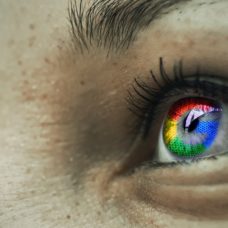As we move into 2018, our idea of prosthetics may become something more.
Those familiar with the resurrected HBO hit TV show Westworld know that they can do crazy things with medicine in that world. Recent breakthroughs in medical technology signal that a world similar (at least medically) might not be far behind.
What does molecular printing technology mean for the future of medicine?
Could #Westworld Soon Become Reality?Click To Tweet
3D Printing Organ Systems Leads to an Even Bigger Development
As early as February of 2017, news outlets began reporting on Dr. Anthony Atala of the Wake Forest Institute for Regenerative Medicine. He and his team developed something known as the ITOP – the Integrated Tissue and Organ Printing system. Using tissue from patients, “you’re basically laying down cells layer by layer,” Atala says of the process.
Due to the fact that they use cells from the patients’ themselves, there is no risk of the body rejecting the new organs. Advancements such as this can dramatically decrease mortalities caused by the ever-increasing organ transplant waiting lists.
It comes as no surprise then that others have also developed solutions to this problem. There is a surprise, however, in that it all revolves around molecular printing technology.

3D Printing Hydrogels to Mimic Soft Tissue
A team of researchers at Queen Mary University of London developed 3DEAL – an affordable and easy fabrication technique that generates complex soft matter (like hydrogels) on a molecular level.
The process can replicate molecular patterns in soft matter to such a degree as to recreate biological situations. As suggested by Phys.org, this could be used in the development of complex tissue constructs.
The implication here is that, not only can you create more effective drugs and drug tests, it can be used cheaply and is extremely versatile. But, that is not where the 3D Printing train to Westworld stops.
A New Solution for Burn Victims, Cruelty-Free Cosmetics, and More
Resembling pink goo like the messy toys of so many childhoods, you can now 3D print human skin. A team of researchers in Spain have developed a 3D printer capable of performing a biotech miracle: printing totally functional human skin.
This realistic tissue can be used in skin grafts or even to test cosmetics, sparing furry friends and unwilling siblings alike. It bears the epidermis and dermis layers like normal human skin and can be made from a stock of skin cells or from the cells of the patient themself.
The skin is so realistic that you can also test pharmaceutical products on it pending the approval of regulatory agencies.
With it? On it? What is the proper preposition when discussing how one experiments with molecular printing technology? The more important question is, what happens in a world where we can mass produce human organs and tissue?
Scarcity and Greed Could Tarnish Medical Breakthrough
Those of us who find ourselves in the weirder parts of the internet for whatever reasons might know about this. While a similar film with Jude Law called Repo Men premiered in 2010, Repo! The Genetic Opera came first.
In the world of Repo, corporations own the molecular printing technology used to recreate human organs. If people want to replace a liver or, as in the case of Blind Mag, their eyes, they have one option. That option is to pay exorbitant fees to Geneco until you can’t. That’s when the Repo Man “strikes”.
In an alternative but equally dystopian view, the Syfy series Incorporated also featured a world where human organs and tissue could also be recreated. However, due to the extreme classism and wealth inequality in the world, not everyone can have their ear replaced like the character Laura Larson.
Exaggerated fears aside, a world where victims of pancreatic cancer could potentially survive is one worth working toward. Now that many 3D printing methods are so affordable, it seems that this is an outcome that is (hopefully) more likely than any other more dystopian future|



















Comments (0)
Most Recent